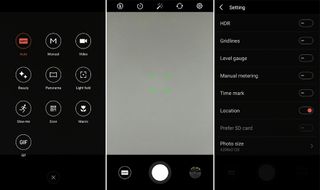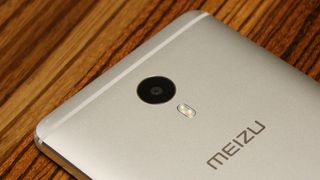Why you can trust TechRadar
Battery life
- Massive 4,100mAh drives the M3 Max into two-day territory
- Proprietary quick-charge claims a 45% charge in just 30 minutes
When you’re rocking a phone with such a large screen, battery size is a very important spec to take note of – and the Meizu M3 Max crams a 4,100mAh battery into a very slim frame.
The only phone to come close to the M3 Max in this regard is the Huawei Mate 9, which packs a 4,000mAh cell into a phone that’s almost the same thickness. When you consider that this is a whole 1,100mAh higher than the iPhone 7 Plus, it seems like quite the contender – but of course the real proof is in the testing.

A power-hungry flagship would still eat away at such a high-capacity battery pretty quickly, but with a low-power chipset onboard the M3 Max manages to breeze past the first night of usage, and without heavy media usage or gaming you could easily make it to the end of two full days without having to reach for the power adaptor.
Subject to the standard TechRadar battery test (playing a HD video at full brightness for 90 minutes, with accounts syncing over Wi-Fi in the background), the M3 Max’s battery dropped by 19%, to finish with a respectable-looking 71% remaining.
But we were a little surprised to see it drop so much, considering that the Samsung Galaxy S7 Edge lost just 14% and the Nubia Z11 20%, and both phones have considerably lower-capacity batteries. If nothing else, this proves that when the 6-inch screen is in constant use, the capacity of the large battery is definitely needed.

Meizu’s battery settings menu enables you to see much of the same information as you'd find on stock Android, but with a number of added power-saving tweaks to help you stretch out the battery life that little bit further.
Strangely, the stats available don’t allow tracking beyond 12-hour blocks, but during our testing we didn’t find the battery life to be too much of a concern, anyway.
If you need a quick top-up, the included quick-charging adaptor can pump up your battery by 45% in just 30 minutes, thanks to a high-wattage output that's some six watts higher than Qualcomm’s Quick Charge 3.0 solution, which is used on many other flagships.
Camera
- 13MP rear camera with twin LED flash, 5MP front-facing camera
- Underwhelming camera software feels half-finished
- Unpredictable focusing makes the snappy burst mode a little pointless
The camera app pre-loaded on the Meizu M3 Max is largely unchanged from the app found on other recent Meizu handsets, and offers a relatively mediocre feature set when compared to many other new smartphones.
The interface has a familiar layout, and includes a few quick toggles to change flash settings, turn the timer on or off, swap between front and rear camera, or play around with the live filters.
Unfortunately, there’s no easy way to switch on HDR without delving into the settings, and bewilderingly, there isn’t a button to quickly record video straight from the camera screen.

Thankfully, there is a fully-laden manual mode, which offers shutter speed, ISO, manual focus, exposure compensation, saturation, contrast and white balance adjustment. Most other phones in this price range forgo these manual settings, so they're a welcome addition here.
Getting into the camera app isn’t exactly speedy, as there's no way to quickly launch the app. To do so, you’ll need to set up a ‘gesture wakeup’ shortcut. We chose the obvious 'C' motion which seemed to do the trick, although it didn’t seem to register our gesture 100% of the time.
We were genuinely surprised by the burst mode, which takes as many as 30 shots in a single second when you press and hold the shutter button. This is even quicker than flagships costing twice as much, but unfortunately it sounds more impressive than the results would suggest.

The slow focus time means that even though you could capture many photos incredibly quickly, the majority would be out of focus, making it next to useless for catching the fast-paced action for which it's intended.
In general the quality of images from the Meizu M3 Max's camera is average at best. In good daylight pictures are more than adequate for sharing on social media, with accurate colours and decent dynamic range pulling in plenty of detail.
Sadly the majority of night shots we attempted were spoilt by processing filters that overly smoothed the images, making them look artificial and smeared on closer inspection.
The 5-megapixel front-facing camera, meanwhile, isn't too bad. Sure, it’s not quite up to the standard of HTC’s wide-angle, optically-stabilised snapper, but it’s better than many other budget smartphones can muster.
Camera samples










Current page: Battery life and camera
Prev Page What’s it like to use? Next Page Verdict and competition